How a growing Idaho-based medical group used Heisenberg II to optimize medical compensation planning, strengthen ties with providers and generate huge efficiencies

Problem: Growing rapidly, the medical group was facing increased complexity and confusion around medical compensation planning. They needed a management solution to simplify the process and increase transparency for providers.
Solution: The Heisenberg II Provider Compensation (HII PC) platform consolidated and automated compensation functions within one system that could then provide access to accurate, real-time data for providers and administrators.
Benefits: Transparency: The system significantly reduced questions and confusion from providers. Labor efficiency: Analysts have gained as much as 30% or more time previously spent on manual processes. Revenue: The medical group was able to reduce costs by as much as six figures & help motivate increased physician productivity.
30%
Analysts gained as much as 30% or more time previously spent on manual processes
6 Figures
Reduced costs by as much as six figures & helped motivate increased physician productivity
“I was on a quest to find a technology‑driven solution for our payroll administration,” says Spiedel, Vice President of Finance for the group.
The Boise, Idaho-based medical group had been experiencing rapid growth in recent years. With the region’s only Level II Trauma Center and recognition by IBM Watson Health as one of the Top 15 Health Systems in the country, its services had been in increasing demand by patients seeking reliable, high quality medical care. But such rapid growth also brings tremendous challenges, particularly with adding new providers, many under a variety of different contractual terms. For example, how do they handle medical compensation planning for a diverse group in a way that fosters accuracy, efficiency, and transparency?
That last item was particularly important to them, as they understood it to be key to fostering good relationships with providers. “Our number one reason for going down the path with Heisenberg was transparency,” says Spiedel. She says they were definitely interested in cost savings and labor efficiencies (and did achieve those outcomes with Heisenberg II), but those goals were secondary.
She says that their group was still using Microsoft Excel to pay the providers, and the very manual process was beginning to create problems for compensation handling. They turned to the Heisenberg II Provider Compensation (HII PC) platform to help them strengthen provider relationships, make compensation management more efficient, reduce costs, and even bolster revenue generation.
“The reliability, scalability, data integrity, and calculations have just been great and valuable.”
— R. Van Beek, Director of Physician Contracting
How does Heisenberg II work for medical compensation planning?
HII PC starts by integrating and consolidating all the disparate systems and information related to medical compensation planning – like contract terms, payroll, scheduling, time & attendance, etc. – into a single platform. That completely eliminates the need for analysts to maintain complex spreadsheets or manually transfer information between sources.
The system then automatically handles most aspects of medical compensation planning, including building out all organization, industry, and region or state specific detail for calculation, adjudication, and evaluation. This eliminates any errors resulting from manual, spreadsheet-based processes. It then alerts operators of any exceptions it identifies, while making all information available in real-time to both administrators and physicians through role-specific, personalized dashboards and reporting. That way, all parties can know they’re looking at the same information and can verify performance under the compensation model.
By bringing all compensation management into a single system and automating most key functions, HII PC simultaneously improves accuracy, transparency, and labor efficiency (as this rest of the case will illustrate).
“Heisenberg is now the first place we send providers for questions, so they can help themselves rather than turning to an analyst.”
— R. Van Beek, Director of Physician Contracting

What challenges were they facing?
The group had some fairly ambitious goals for medical compensation planning. While growth is a great problem to have, it does create challenges. The increase in the number of providers was introducing more variables, and their spreadsheet-based processes weren’t scaling as needed to accommodate this growth.
This, in turn, was starting to create some friction. Aside from potential for error or delays in reporting compensation information, much of the information was captured in ways that Spiedel describes as “accounting centric.” She explains that a lot of the information was recorded in a way that would make sense to accountants but not necessarily providers, resulting in yet more questions and confusion.
This friction was threatening to erode the trust and rapport that the organization worked very hard to build with its providers. While medical compensation planning issues may not be the sole or even principal cause of turnover, the impact they have on provider engagement is significant.
Their manual processes were also less efficient than they could be. “Though it wasn’t the primary goal,” says Spiedel, “we did think that it would eventually make our payroll process more efficient.”
Medical compensation planning goals
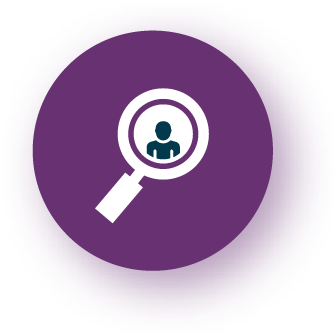
Transparency:
They wanted providers to be able to log in and access full, accurate, real-time compensation details at any time. That, in turn, would build trust and relationships.
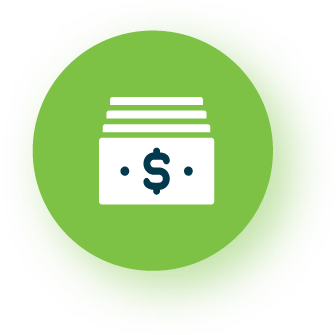
Revenue:
They wanted to increase revenue by using the system as a motivational tool to help facilitate providers in meeting practice goals.
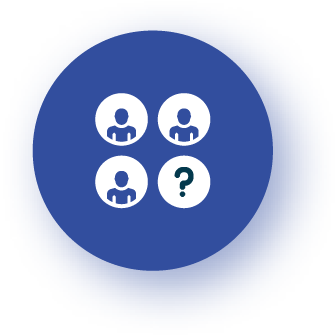
Retention:
They were looking to reduce turnover by at least one provider per year by building trust and eliminating payment issues and questions.
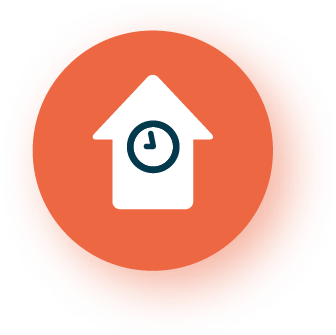
Accuracy:
They were hoping to reduce errors, such as overpayments to providers, that result from manual processes founded on spreadsheets.
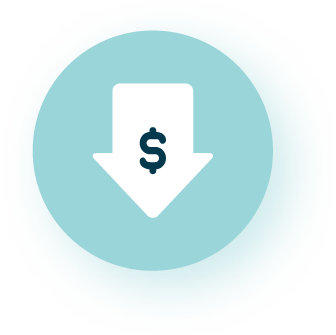
Cost Savings:
If they can catch issues like overpayments, they can eliminate errors and reduce costs, while also consolidating vendors.
Outcome
Increased Transparency
Spiedel believes Heisenberg II has more than helped their organization to meet its primary goal: “I really think the providers have their questions answered more readily and don’t have to funnel their questions to an executive medical director.”
She says this was a major factor in their selection of the Heisenberg II technology, in fact. They wanted a system that would allow providers to just log in and access full compensation details at any time.
The system has also helped in another way they didn’t even originally anticipate. By incorporating benchmarking data directly into the system, they’ve been able to remedy what had been a source of confusion. Previously, they had obtained benchmarking data from a third party that calculated the data differently from how the group operates. Spiedel says, “They based it on the date the patient was seen. We pay them based on the date the bill dropped or they actually charged in the system, so the monthly totals were different. That eroded trust and led to a lot of confusion and questions.”
Providers still have occasional questions even with HII PC in place, of course, but at a much-reduced volume. Van Beek, the director of physician contracting, says that more complicated questions still filter through, but now analysts don’t have to worry about the simpler questions anymore.
“I could make a guess that getting rid of manual data entry has to be a 20 to 30 percent time saver at least, and maybe even more.”
— R. Van Beek, Director of Physician Contracting
Improved Efficiency
“It’s allowed more time for analysts to work on more meaningful work because they are not entering RVUs into a spreadsheet and making sure all their formulas are accurate and tying to the correct cells,” says Van Beek.
That creates space for analysts to focus more time and energy on higher-level organizational objectives. When ad hoc questions do still come through from providers, operational leaders, executive leaders, or others, Van Beek and his staff can usually just go in and select from multiple report options to find the information. That’s only possible because all relevant information is now in one place.
Altogether, the labor efficiency has been dramatic: Van Beek estimates that funneling all medical compensation planning information through HII PC and then leveraging its automated functionality has freed up as much as 30% or more of the analysts’ time.
This efficiency also has accuracy benefits, with fewer underpays and overpays. Spiedel says the compensation errors they’ve encountered since deploying Heisenberg II all happened from payments that were handled outside of the platform. Sharp-eyed analysts at the organization combined with powerful discrepancy reporting features ensured they could spot discrepancies like under or overpayments, with options to notate and address these issues.
Results In Their Own Words:
Transparency
“Providers are able to answer a lot of their own questions themselves.”
Efficiency
“It’s so much better than trying to sift through different spreadsheet tabs.”
Productivity
“We think of it as being motivational and driving business.”
– R. Van Beek, Director of Physician Contracting
– S. Spiedel V.P. of Finance
New Cost Savings
Though many of the revenue and cost reduction impacts of the HII PC platform are hard to quantify, it does appear that the system has helped in these areas as well.
“The big cost saving was stepping away from another [related] system,” says Spiedel, referring to their ability to consolidate multiple functions, including benchmarking, into HII PC. That savings approaches six figures a year.
Spiedel says Heisenberg II’s deployment also coincided with a period of revenue growth. Though their team is still analyzing the ROI for the system – which has been in place for a little over two years – they believe Heisenberg II may have played a role in boosting revenue. “We think of it as being motivational and driving business, as well as eliminating other vendors that we were using.”
In other words, access to clearer, real-time information can help providers to better understand how their activities directly affect their payments. That can motivate them to align their activities around revenue producing priorities (the whole purpose of incentives in the first place) that benefit both themselves and the organization as a whole.
“Having a one-stop shop has really helped us find data for any question, for any period of time, that we were in Heisenberg.”
— R. Van Beek, Director of Physician Contracting
Strengthened Resiliency
Another unanticipated benefit of the HII PC system was an unexpected degree of resiliency in the face of disruption and change.
For instance, they had faced some turnover in one of their compensation administrator roles. Because that person carried so much institutional knowledge, had the group still been reliant on heavily manual medical compensation planning processes, the loss of that person would have had a serious negative impact. “We would have just collapsed having our personnel leave before Heisenberg,” Spiedel says. With Heisenberg II in place, she says they were able to weather the turnover very easily.
She also describes Heisenberg II’s benefits in dealing with COVID-19. During the pandemic, the hospital system needed to implement a COVID-related compensation policy, which necessitated revising all provider contracts within a short timeframe.
Thankfully, Heisenberg II made it simple. “It has been hugely valuable in doing those change requests,” Spiedel says. She and Van Beek can just take changes back to the tech team, who can deliver it quickly and easily. “We’re super grateful. It fostered a lot of loyalty on our part.”
Looking to the Future
Now, HII PC is helping their team to plan for the future. They’ve been able to use data procured in the system as part of a new medical compensation planning redesign initiative to ensure their model is sustainable, fair, and clear. “It’s a good treasure trove of data that has helped us understand our current status and then be able to look at where we want to go,” says Van Beek. Specifically, by being able to pool data down to the level of wRVUs produced in any time period and its impact on compensation, they can use the system to model new comp plans. In short, the Heisenberg II Provider Compensation platform not only helped them to meet their initial goal of increased transparency, but it has also yielded numerous side benefits and has positioned their team for success as they move into the future.
For more information about Heisenberg II, visit hallmarkhcs.com.